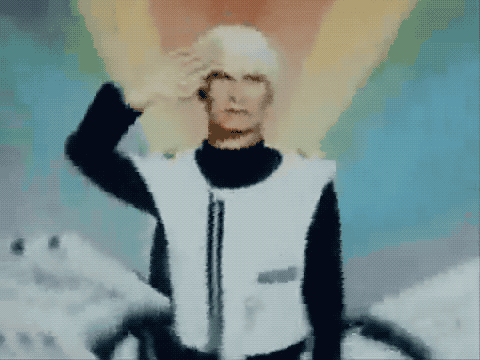#captain scarlet and the mysterons gif
Photo






Captain Scarlet and the Mysterons
S01E12 - Lunarville 7 (1967)
Created by Gerry Anderson and Sylvia Anderson
Century 21 Productions for ITC Entertainment.
Dir. Robert Lynn
#captain scarlet and the mysterons#captain scarlet#gerry anderson#lunarville 7#1960s science fiction#supermarionation
64 notes
·
View notes
Text
Me reading chapter 4 of the first Captain Scarlet novel be like:

@uniwolfcorn @teapotteringabout @skymaiden32 @knyee @janetm74 @mariashades @yarol2075
#Nadrac's random muses#captain scarlet#captain scarlet and the mysterons#captain scarlet novel#Supermarionation#gerry anderson#I feel for White in this chapter#my guy nearly balded watching one of his Angels fall off the sky!
26 notes
·
View notes
Text
More stupid Captain Scarlet headcanon.
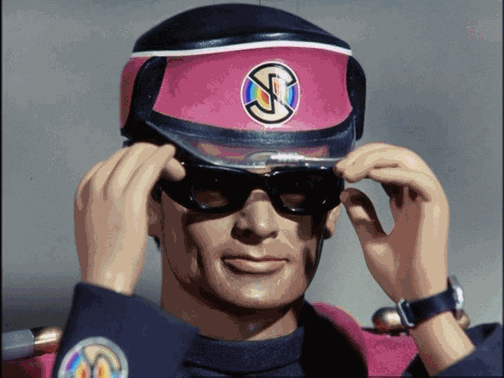
Psyche, Captain Magenta needs no stupid headcanon. Patrick Donaghue, his actual name, was a - and I quote - "godfather of a cybercrime mob".
Yes. This character, written in 1967, was a fucking hackerman nerd and it is hilarious that Gerry and Sylvia Anderson could not have foreseen how ridiculous this would look to us, post-90s.
He was hired by Spectrum and given a pardon by the World President because they "needed a criminal mind".
This criminal mind is seen in the show being so fucking enthusiastic to be given a gun and a fancy hat that he nearly shoots his colleagues on sight while on guard duty.
As for his colour! Apparently while being trained by Conrad Turner, who already dramatically called himself Captain Black even before Spectrum was founded, he was code-named 'Magenta' and I personally feel this was deliberately promoted by Patrick in mockery of his drama queen drill sergeant.
Pink is the New Black, after all.
#deafmangoes#captain scarlet#captain scarlet and the mysterons#captain magenta#sylvia anderson#gerry anderson#supermarionation
38 notes
·
View notes
Text

#gerry anderson#supermarionation#the secret service#ロンドン指令x#thesecretservice#magicavoxel#3d#3dcg#captain scarlet and the mysterons#captainscarlet#captain scarlet#blender#my first time in blender haha
10 notes
·
View notes
Photo
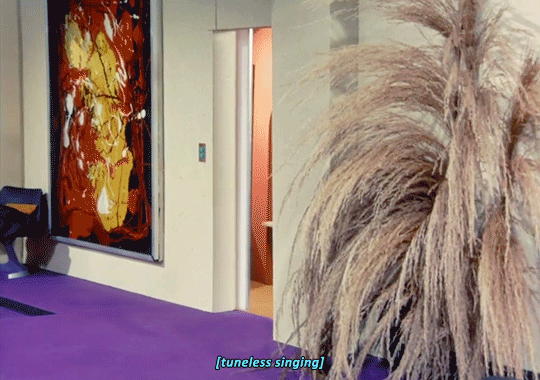


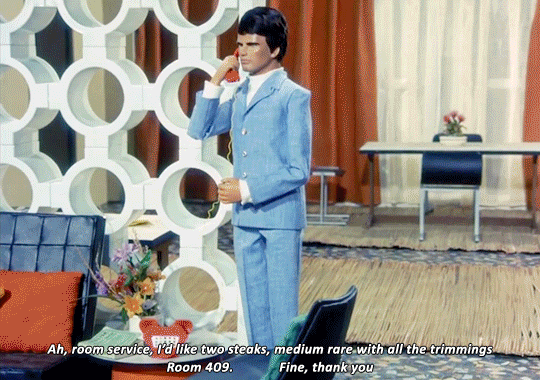


#Captain Scarlet and the Mysterons#Flight 104#Captain Scarlet#Captain Blue#the old one is doing the rounds but it's rly hard to follow#idek if this is any better#but yeah#just imagine if they re-re-made captain scarlet how glorious these two would be
36 notes
·
View notes
Photo

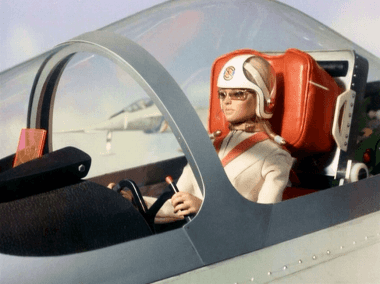
Angels - Captain Scarlet and the Mysterons (1967)
#captain scarlet and the mysterons gif#supermarionation gif#60s sci-fi#gerry anderson#60s tv series#sylvia anderson#puppets#angels#special effects#sixties#1967#gif#chronoscaph gif
160 notes
·
View notes
Text

Remember how he wasn't invincible, only indestructible? Every single time he got shot or crushed or blown up or fell off something he experienced the pain and misery of death over and over again before the Mysteron retrometabolism returned him back to how he was before.
And remember how "before" for him means existing as the alien replica of the dead body of the real Captain Scarlet? Free will aside he's still a Mysteron replica so does he eat? Breathe? Sleep? Age?
Does he still believe he's even human? Do the rest of SPECTRUM?
#captain scarlet#the bleakest 90s kid-est take possible I'll admit#but these things... they bother me
25 notes
·
View notes
Text


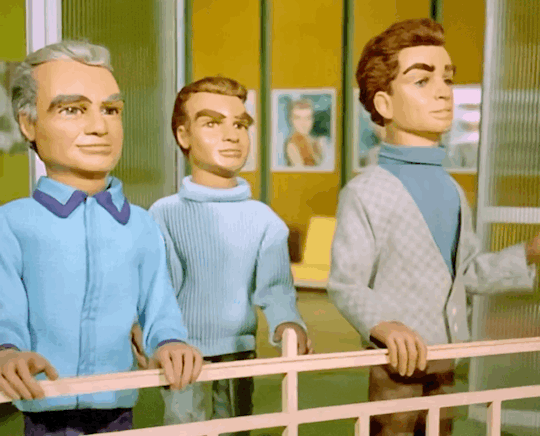

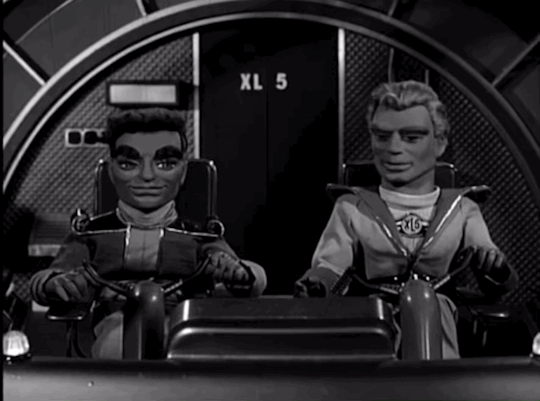

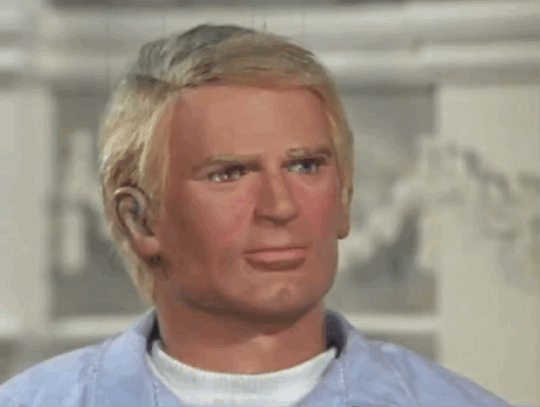
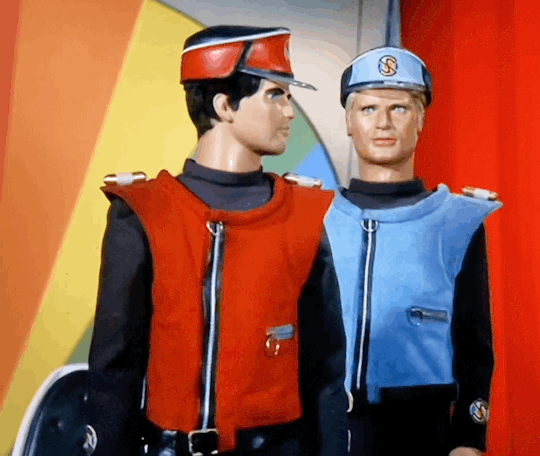
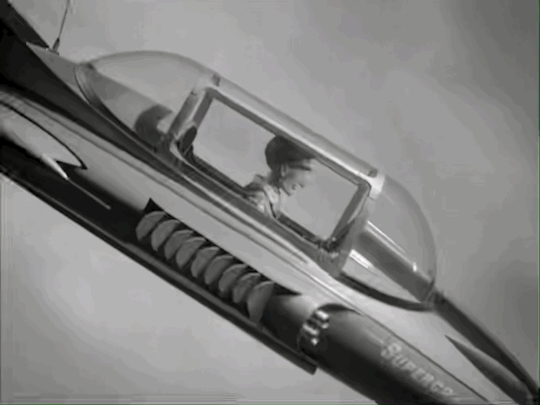

Happy Gerry Anderson Day!✨
#thunderfam#thunderbirds#supermarionation#gerry anderson#thunderbirds 1965#thunderbirds tos#marionettes#lavender castle#captain scarlet and the mysterons#stingray tv show#Supercar#four feather falls#the secret service#fireball xl5#terrahawks#joe 90
78 notes
·
View notes
Photo
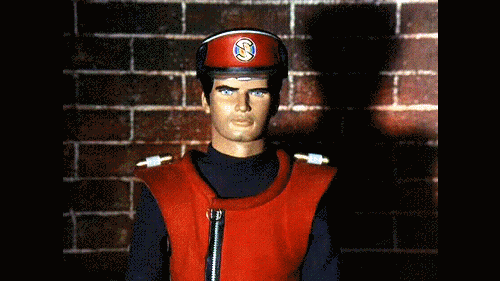
Captain Scarlet and the Mysterons
Created by Gerry Anderson and Sylvia Anderson
Century 21 Productions for ITC Entertainment.
67 notes
·
View notes
Text
Was this the first published story in the Doctor Who universe?
youtube
The surprising crossovers between Gerry Anderson’s Thunderbirds, Captain Scarlet, and a completely forgotten corner of 1960s Doctor Who …
I. TV Century 21
In 1960, producer Gerry Anderson and his wife Sylvia pioneered a new form of “marionette animation” called supermarionation. Not to be confused with a Nintendo fan group, this distinctive puppet-based film-making technique was developed by the Andersons’ company, Century 21 Productions, for their Western show Four Feather Falls (the inspiration for “Woody’s Roundup” in Toy Story!). It went on to be used in a number of futuristic children’s television shows, which can be roughly organized by setting:
Present Day, 1960s: Supercar (1960-61) and The Secret Service (1969)
Near Future, 2010s: Joe 90 (1968-69)
Far Future, 2060s: Fireball XL5 (1962), Stingray (1964), Thunderbirds (1965-66,68), and Captain Scarlet and the Mysterons (1967-68)
Starting in 1965, Century 21 Publications published TV Century 21 children’s magazine to continue these shows’ storylines while they were off-air. Each issue was framed as a news bulletin from exactly a century in the future: for instance, issue 11 was published on 21 April 1965 but cover dated 21 April 2065. TV 21 also included a few strips based on non-Anderson-produced shows, including Burke’s Law and – yes – Doctor Who.
While rights to the Doctor himself lay with the competing magazine TV Comic, children across Britain remained in a state of Dalekmania, and following the success of The Dalek Book (1964), Terry Nation and David Whitaker were more than willing to contribute their individually-held intellectual property to an ongoing strip, titled simply …

To fit other shows and settings into TV 21’s far-future premise, the fictional journalists were given a time machine to report on the 1960s adventures of Burke’s Law and Supercar, and Daleks stories were frequently introduced as reports from the Space Agency (later “Space News Agency”) via Hyper-Space Video-Phone. (The same Space Agency that was mentioned to have employed Adelaide Brooke’s granddaughter in “The Waters of Mars”?)
In keeping with the framing device, news alerts about other stories regularly bled into the coverage of the Daleks’ adventures:

These STOP PRESS interjections are present in every issue and fully a part of The Daleks, to the point that they were reprinted with the comics in Doctor Who Magazine’s The Dalek Chronicles (1994) and Penguin Books’s more recent graphic novel. What weren’t included in those reprints were the numerous Dalek tie-in short stories printed on the front cover of TV 21, which resembled a newspaper’s front cover with teasers for that week’s stories:

These brief stories often included new material adding details to the events in the stories. For instance, the cover of issue 18 focused on Stingray but also told a brand new story about an astronomer in New London, Mars, picking up a threatening Dalek radio signal. And issue 47’s cover, shown above, reported that the planet Oric from Daleks comic “Eve of War” had unsuccessfully appealed to the World President for aid; the reason for Earth’s refusal was given within the issue’s Stingray story as the freak weather attacks tasking Earth’s authorities at the time. Despite this original Dalek content, the cover stories have never been re-released since 1965-66.
These forgotten stories make it abundantly clear that The Daleks is part of the Anderson unified fictional universe. But what makes the connection even clearer are the direct crossovers, not just between TV 21 and The Daleks, but between TV 21 and Doctor Who itself.
II. The Astran Space War
Which brings us to Astra.
No, not the princess of Atrios played by Lalla Ward in “The Armageddon Factor”. The planet Vicki and her dad were headed to before their ship crashed. Surely you remember that single throwaway line from “The Rescue”?
BARBARA: Well, what was the year when you left Earth?
VICKI: 2493, of course. My mother had just died and Daddy wanted to get away so he took a job on the planet Astra.
IAN: You were on your way there and you crashed here?
VICKI: Yes. But why did you ask me the year? What year did you leave?
Those lines, penned by David Whitaker, aired in January 1965 just two weeks before The Daleks started syndication on the back page of the TV Century 21 children’s magazine. Who fans have known for decades that TV 21 editor Alan Fennell helped Whitaker write the first few Daleks strips, but what I realized for the first time a few months ago was that Whitaker seems to have lent Fennell something in return:
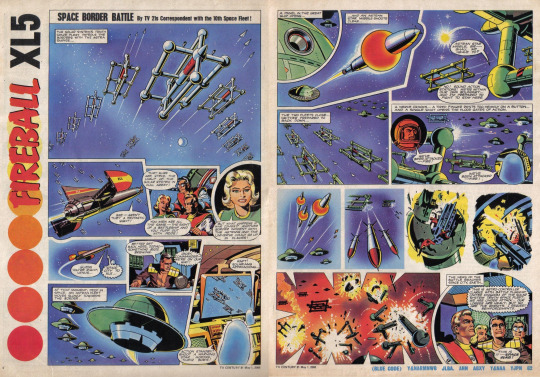
The planet Astra, its people’s Space Empire, and their Space War with Earth are the major arc of the first year of TV 21. We see diplomatic visits to Astra, its leader’s assassination on Earth, and a number of epic space battles. The plot embroils characters from across the Anderson universe: Steve Zodiac from Fireball XL5, Troy Tempest from Stingray, and even Lady Penelope and Parker from Thunderbirds.
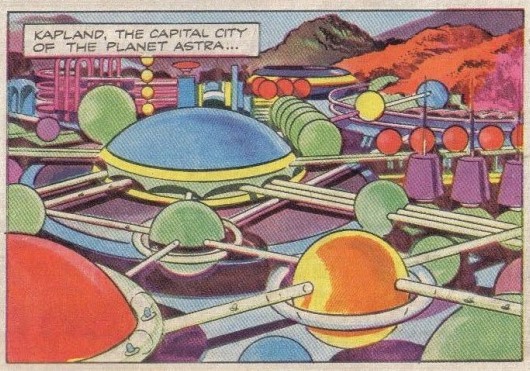
After the arc ended, the Astrans continued to feature in miscellaneous stories for over a hundred issues. For instance, a character recalls the war in issue 132 as part of the lead-up to Captain Scarlet and the Mysterons, giving Who a link to yet another Anderson series. In fact, Astrans were referenced in an Anderson story as recently as August 2020!
(When the Astran War arc was reprinted in the late 1980s – during which, like the “Enemy of the World” novelisation, the setting was updated from the 2060s to the 2080s, still 100 years in the future – the tensions between Earth and Astra were recontextualized as part of a new round of meddling by the Mysterons from Captain Scarlet. Notably, the 2004 Second Doctor novel “The Indestructible Man”, itself a thinly-veiled crossover with Captain Scarlet and other Anderson series, depicted the second invasion of the Mysterons “Myloki” as occurring in the 2090s.)
In TV 21, it was in the context of the Astran War that audiences were first introduced to the world capital, Unity City, and World President Nikita Bandranaik. These characters and settings went on to appear across a number of Anderson series: for instance, the first-ever Captain Scarlet comic was called “We Will Destroy Unity City”, and Bandranaik’s successor T. J. Younger actually appeared on TV in Captain Scarlet. Unity City was also mentioned in a recent Joe 90 story, tying in yet another Anderson supermarionation show.
The Astran Space War links Who to Anderson shows like Fireball XL5, Stingray, and Captain Scarlet. But the connection with Thunderbirds is even more direct – to the point that it went beyond the pages of TV 21 onto screens.
III. Thunderbirds
Not a lot of people know this, but the first episode of Thunderbirds in September 1965 wasn’t the first time that audiences met its main characters: they had already debuted in the pages of TV 21. For instance, Lady Penelope and her butler Parker first appeared in a comic story that ran from TV 21 #1-11, and Tracy Island – the distinctive home base of the Thunderbirds family – debuted in the background of a photo in issue 5’s cover story.
This is a great Easter egg for Anderson fans, whose understanding of these images and comic characters was totally transformed when Thunderbirds debuted. But it’s also a link to the Doctor Who universe, because as it happens, each of these covers were also directly linked to The Daleks:
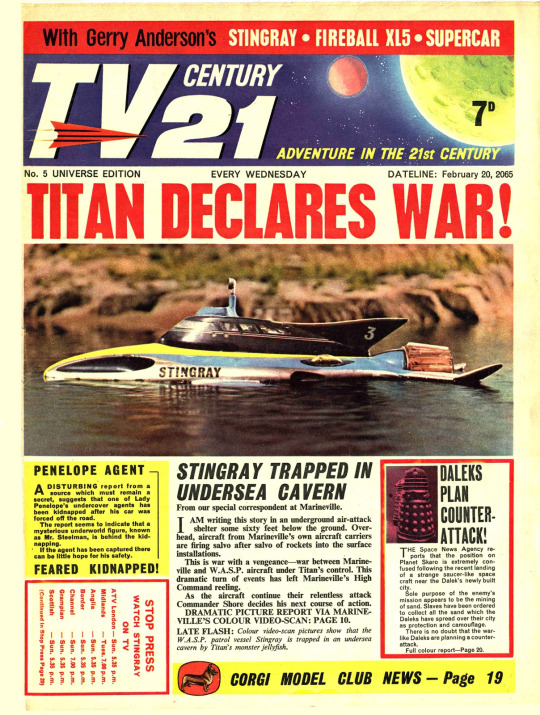
Per Lady Penelope’s brief cameo in “The Dying Days” (1997), we already knew that she existed somewhere in the Doctor Who universe (at least sometimes). But now we know that she and Tracy Island, two of the most fundamental elements of the Thunderbirds series, have been part of the Whoniverse from the very beginning. Let me say that again: Tracy Island literally debuted in a Dalek crossover story.
And Century 21 Productions didn’t forget this connection while making the Thunderbirds show. In the first moments of the Thunderbirds series 1 episode “The Man from MI.5” (1966), there’s a shot of some hands rifling through papers in a desk drawer, and one of the various magazines included is none other than TV 21: to be exact, issues 32 and 33.
So for sharp-eyed viewers, “a Solturis News Agency Report” regarding the Daleks – that is, a few panels of “The Penta Ray Factor” – can be seen on-screen in a Thunderbirds episode! The good blokes of the Gerry Anderson Podcast break it down in this Youtube video:
youtube
IV. "Space Vacation” (added 2022)
So far we’ve laid out Doctor Who’s connections with the shows Thunderbirds and Captain Scarlet and the comic series Stingray and Fireball XL5. But I haven’t quite delivered on my title, have I? I linked to the intro from Fireball XL5 – the show, not the comic – and asked if it was “the first published story in the Doctor Who universe”. I’ll freely admit that my original intention was clickbait: the Fireball XL5 intro is just entertaining. But as it happens, a year after I originally published this post, another crossover connection surfaced: one that vindicates the claim I didn’t even think I was making.
If you ask a Who trivia nerd about the earliest crossover with another series in televised Doctor Who, they might cite the epic 12-part 1965 serial “The Daleks’ Master Plan”. For a few scenes set in a police station, co-writers Terry Nation and Dennis Spooner hoped to borrow the cast and characters from the popular police procedural Z-Cars. However, Z-Cars producer David Rose rejected the proposal, so, the official story goes, we have to look years or decades later for a real official crossover.
But as we’ve only now discovered, we’re focusing on the wrong part of “Master Plan”. That serial and its prequel “Mission to the Unknown” feature the planet Kembel, an inhospitable jungle world – so hostile that Daleks built a base there because no one could possibly find them. The planet was called “Varga” in Nation’s original script, but it was renamed in later drafts to “Kembel” or “Kemble” after Spooner joined the writing team. A particularly eagle-eyed viewer might note that Kemble actually debuted in a hamfisted lead-in at the end of the prior serial, “Galaxy 4”.
So goes the standard account. But the standard account is wrong! Kemble didn’t debut in “Galaxy 4”. In fact, it didn’t debut in Doctor Who at all…
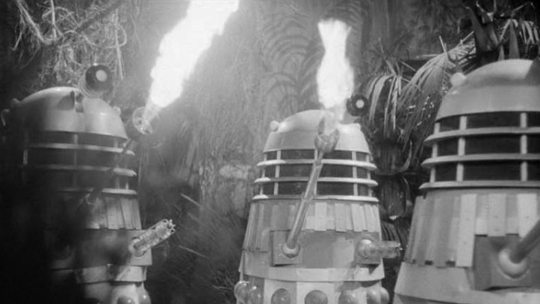
In February 1963, “Space Vacation” – the 17th episode of Fireball XL5 season 1 – aired on ITV. It was penned by Dennis Spooner, the later “Master Plan” co-writer. The story revolved around a conflict started by a group of humans desparate to escape the hostile conditions of their colony planet, which is described as “a horrible place” and “almost impossible to live on”. Can you see where I’m going with this?
Behold, the new earliest known crossover with Doctor Who: over nine months before “An Unearthly Child” … the debut of the inhospitable planet Kemble!
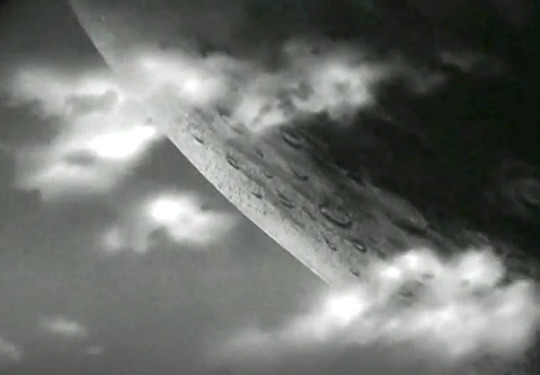
V.
In light of all these crossovers and connections, could we say that Doctor Who shares a universe with the works of Gerry Anderson? When I suggested this, some commenters disagreed by citing in-universe references to the Anderson series, like this fun exchange in “Death in Heaven” (2014):
DOCTOR: Where are we going? Cloudbase?
KATE: You mean the Valiant?
OSGOOD: Cloudbase was Thunderbirds.
[…]
AHMED: It was Captain Scarlet.
OSGOOD: Sorry?
AHMED: Not Thunderbirds.
OSGOOD: Oh God, so it was.
DOCTOR: My confidence is growing every minute. […] Mind you, me, and Sylvia Anderson, you’ve never seen a foxtrot like it.
I could answer that plenty of series have crossed over with Doctor Who despite also existing as fictional franchises in-universe. A classic example is “Assimilation2”, which featured Star Trek characters despite a long history of Who characters referencing the series as fictional. It’s also true of Blake’s 7 and Doctor Who itself. Why not Thunderbirds and Captain Scarlet, as well?
That answer is good enough, but it’s also a little “technically correct”. To the extent that it matters, it’s pretty clear that when Moffat penned those lines, he wasn’t intending it to be some kind of complex metafictional construct. Since The Daleks left TV 21 in January 1967, the number of Doctor Who writers who have thought of Stingray as part of Who’s fictional universe is probably in the single digits. It’s a little hard to argue with 54 years of precedent.
… or is it?
Put yourself in the shoes of one of TV 21’s young readers. It’s May 20th, 1967, and it’s been four months since the last Dalek story in TV 21. Since then you’ve seen them in a few issues of TV Comic, but it’s not the same: the stories are black-and-white, not colour, and there’s no sign of the Emperor Dalek.
You flip open this week’s TV 21, cover dated today. Between reports of the Thunderbird team’s “Operation Earthquake” and Fireball XL5’s newest adventures with the Astrans, you spot a familiar image on the page where Agent Twenty-One answers questions from Universal Secret Service Headquarters:
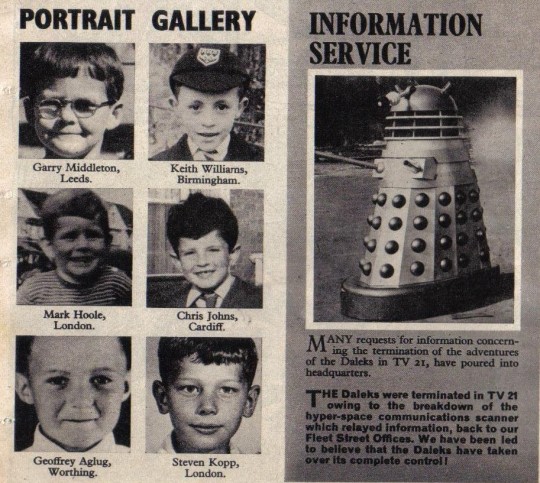
A fully in-universe explanation: on their way to invading Earth, the forces of Skaro have seized the hyper-space video-phone which had transmitted the Space Agency’s reports to TV 21! They’re only disclosing this because Steve Zodiac is believed dead on the Astran frontier, and the World President is preparing humanity for war…
That afternoon, you sit down to watch the new Doctor Who: the first episode of David Whitaker’s “Evil of the Daleks”. This is the serial in which the terrifying Dalek Emperor appears on television for the first time: its name and dialogue is lifted right off the page of the comics, and while its appearance might not match, you read The Dalek Outer Space Book, so you know all about how he was transferred from his golden casing to a stationary shell connected to machinery. Will Dr. Who and his friends be able to foil the Dalek plot to invade Earth?
Now imagine someone sits you down and tries to tell you that Doctor Who exists in a different universe from the Anderson shows. You would look at them as if they have two heads! This is a single universe, the shared world of your favorite stories and characters. How can you say they’re separate, when they’re so obviously, inextricably connected? It in no way invalidates your experience that generations of later writers didn’t know or care about this corner of continuity. To you, it’s real.
From a modern fan perspective, it may feel disorienting to suggest that Doctor Who is “just” a tiny corner of someone else’s fictional universe. Since TV 21 and David Whitaker’s Dalek serials, no author has ever wasted any effort on making the continuities consistent. But as I’ve written before, if 60s Who was one thing, it was overtly self-contradictory and totally inconsistent with our modern understanding of the series. I never expected the rabbit hole to lead me to anything as strange as “Thunderbirds is canon, actually.” But in the context of the 1960s, those silver years before colour TV, before the big questions were answered, before Doctor Who had cemented its place in history … I can’t think of anything that makes more sense.
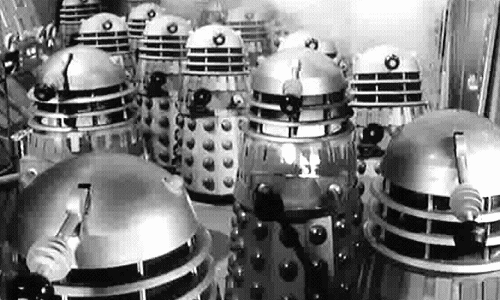
Appendix: Acknowledgements
For this post I’d like to especially thank Borisashton from Tardis Wiki. Not only was he apparently the first Who fan in decades to comment on the “STOP PRESS” interjections in The Daleks, he also followed up on my spotting of the Astra connection by meticulously poring over hundreds of TV 21 issues and supermarionation episodes, wikifying everything he found. Without his effort, there would be no Kemble connection, and this would be a two-sentence fun fact rather than a full-fledged essay. Thanks also to @aristidetwain for his help with brainstorming, canonwelding, and editing this very post, and to Project 21 for their high-quality scans which made all of this research possible!
Appendix: Potential Objections
The Daleks was intended to lead into the second Cushing movie, Daleks’ Invasion Earth 2150 A.D., so could it have really been set in the 2060s?
It’s true that was the authorial intention, but three decades after The Daleks concluded, Doctor Who Magazine continued the series with the story “Return of the Elders” (1997), which showed the Daleks’ first invasion of the solar system being repelled by the alien Elders. The Emperor and his fleet went scurrying back to Skaro, where presumably they planned for their second attempt a century later.
If humans knew so much about Daleks already in the 2060s, why weren’t they better prepared for the 2160s Dalek invasion?
Borisashton has provided an excellent canonweld for this exact question:
The Daleks discover the location of Earth in The Road to Conflict. As per Information Service, they disable the Universal Secret Service’s hyper-space communications scanner on the way, making it extremely difficult to monitor their future activity. The Dalek fleet is repelled in Return of the Elders and the Emperor retreats to quietly rebuild his army. Despite the increased difficulty, the USS continue to keep track of the remnants of the invasion force (Friendly Dalek) and even organise the occasional covert mission to Skaro (Dalek Disguise). SPECTRUM takes over all USS commitments on Earth in late 2067 according to SPECTRUM is Green. However, the war of nerves against the Mysterons soon diverts all of their resources and attention, allowing the dormant Dalek threat to become forgotten. As stated in The Murder Game, they are little more than legend by 2136 and they are able to invade with relative ease because of this almost a century after their previous attempt.
You can read more in his wonderful essay “Inextricable connections to the world of Gerry Anderson supermarionation” at Tardis Wiki!
Who can’t be set in the Anderson universe, since in TV 21 issue 28, Lady Penelope reviewed “Dr. Who and the Daleks” and interviewed Peter Cushing!
That she did – but in the novelisation of “The Day of the Doctor” (2018), Steven Moffat also broke the fourth wall by establishing that the Cushing films were in-universe depictions of the Doctor’s adventures. This is perfectly consistent with the Lady Penelope bit, in which she says she’s interviewing Cushing only because the actual Doctor wasn’t available; the cover story to that issue also describes the movie as based on recent events on Skaro! (Lady Penelope possibly used TV 21’s time machine to make it to 1991 for “The Dying Days”.)
Lady Penelope’s spin-off magazine featured crossovers with Bewitched, The Man from U.N.C.L.E., and The Beverly Hillbillies. Does this mean they’re set in the Doctor Who universe, too?

… uh-oh. Please don’t tell Tardis Wiki!
#doctor who#60s who#daleks#the dalek chronicles#tv century 21#gerry anderson#thunderbirds#captain scarlet#captain scarlet and the mysterons#tardis wiki#death in heaven#the war games#the rescue#first doctor#fireball xl5#stingray#lady penelope#david whitaker#the evil of the daleks#terry nation#effortpost
97 notes
·
View notes
Text

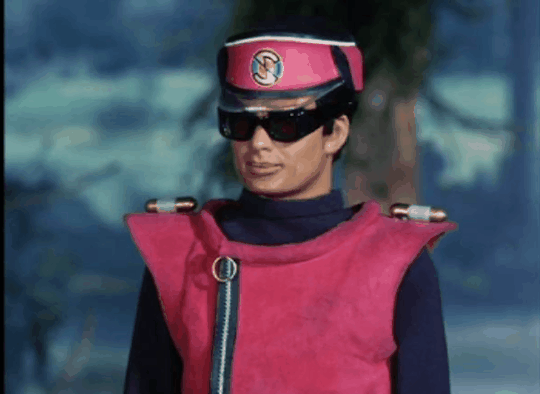
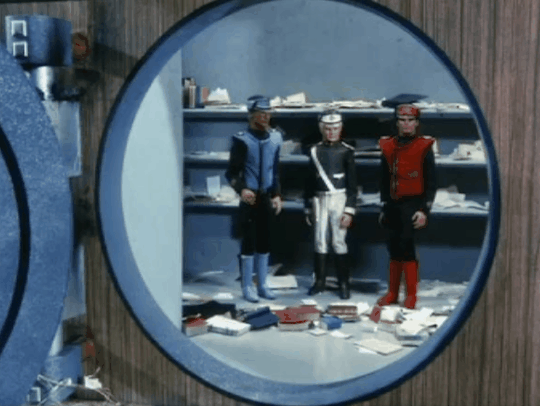
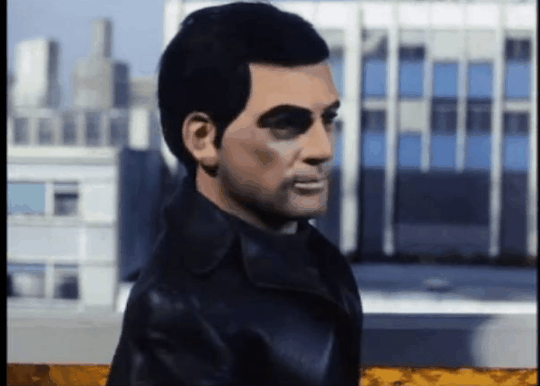


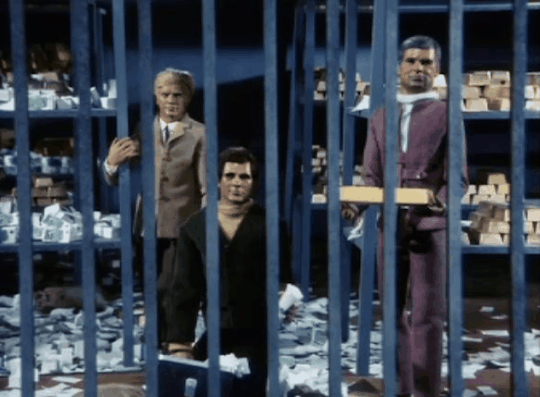
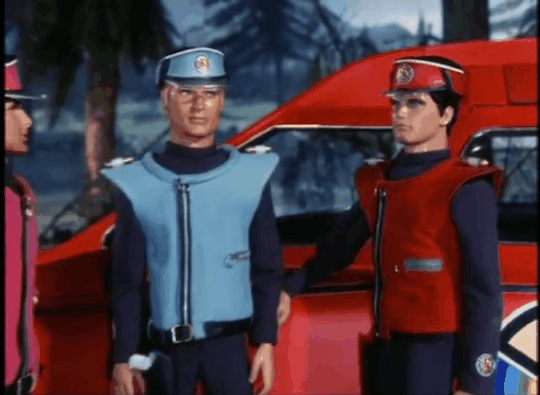
Captain scarlet and the mysterons episode 16: Heart of New York.
54 notes
·
View notes
Photo

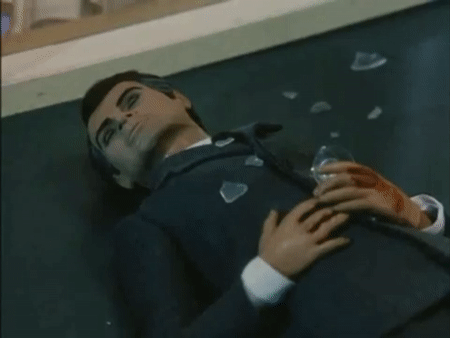

Captain Scarlet s1e30 - “Codename Europa”
#;Danforth#tw guns#tw blood#Captain Black#Conrad Turner#Conrad Lefkon#Captain Scarlet#Captain Scarlet and the Mysterons#mysterons#pupaphobia tw?#(wanted to post something creepy for Halloween - and given that Captain Black was my subconscious inspo. for Danforth)
6 notes
·
View notes
Photo
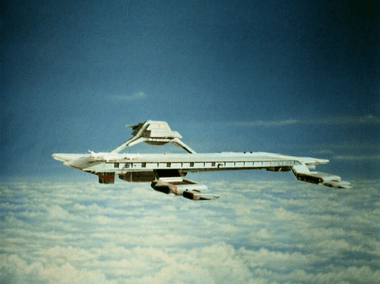


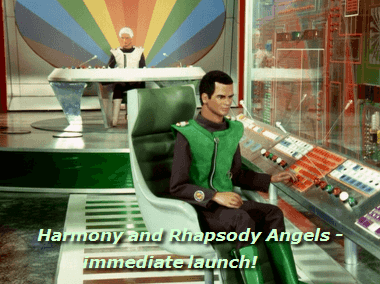



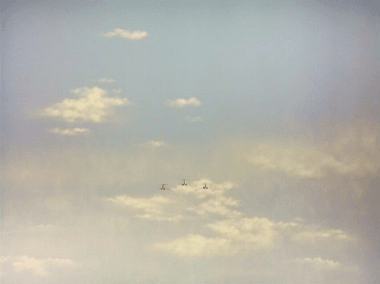
Angels - Captain Scarlet and the Mysterons (1967)
#captain scarlet and the mysterons gif#supermarionation gif#captain scarlet and the mysterons#60s tv series#60s sci-fi#supermarionation#gerry anderson#sylvia anderson#puppets#angels#special effects#sixties#1967#gif#gif set#chronoscaph gif
278 notes
·
View notes
Photo

This gif is just the best thing I’ve ever seen. Captain Magenta in those terrible sunglasses, trying to be cool. It conveys such a mood even though I couldn’t initially figure out exactly what.
Then @thefloatingstone had the best summary: "Shit is that my ex? I'll just leave before he sees me." (Very obviously walks out of the room and getting everyone's attention) "nailed it."
#Captain Scarlet and the Mysterons#Captain Magenta#thefloatingstone#Heart of New York#sunglasses#what a dork#I definitely ship Captain Magenta and Captain Ochre#former mob boss and ex cop is the best pairing
14 notes
·
View notes
Photo









Captain Scarlet and the Mysterons for my boo, @always-a-situation
The Mysterons, sworn enemies of Earth, possessing
the ability to recreate an exact likeness of an object
or person...but first they must destroy.
Leading the fight, one man fate has made indestructible.
His name... Captain Scarlet
It’s been a pleasure to meet you and welcome you to the RP fam. I’m so glad I got to be your Secret Santa this year BECAUSE CAPTAIN SCARLET HELL YEAH :D So I hope you have a hella good Christmas and a happy new year.

*̣̥☆·͙̥‧‧̩̥·‧•̥̩̥͙‧·‧̩̥˟͙˟͙‧̩̥·‧•̥̩̥͙‧·‧̩̥‧·͙̥̣☆*̣̥*̣̥☆·͙̥‧‧̩̥·‧•̥̩̥͙‧·‧̩̥˟͙˟͙‧̩̥·‧•̥̩̥͙‧·‧̩̥‧·͙̥̣☆*̣̥*̣̥☆·͙̥‧‧̩̥·‧•̥̩̥͙‧·‧̩̥˟͙˟͙‧̩̥·‧•̥̩̥͙‧·‧̩̥‧·͙̥̣☆*̣̥*̣̥☆·͙̥‧‧̩̥·‧•̥̩̥͙‧·‧̩̥˟͙˟͙‧̩̥·‧•̥̩̥͙‧·‧̩̥‧·͙̥̣☆*̣̥
52 notes
·
View notes
